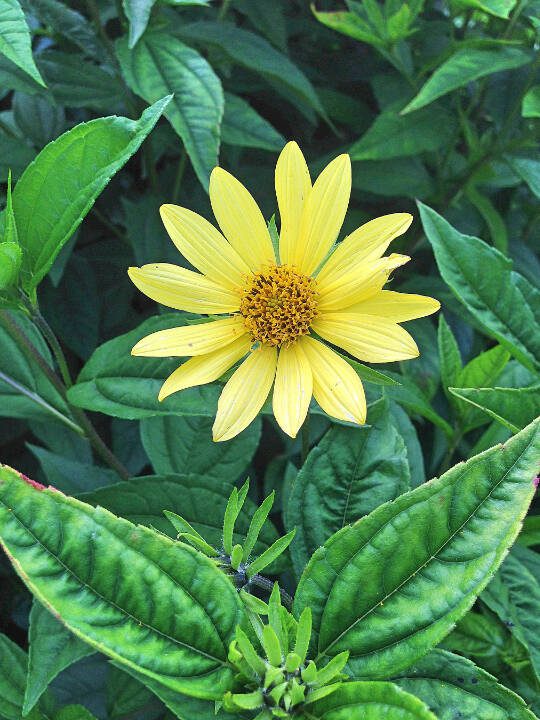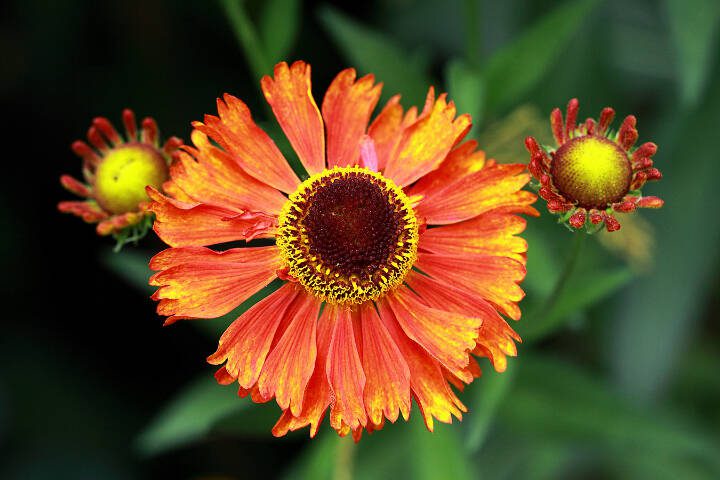We are moving into the later part of summer when all of the spring and early summer perennials have finished up and it is time for those mid- to late-summer bloomers to take front stage.
Keeping the show going in our gardens can be tricky, especially if we are prone to only do our shopping in the spring months and focus on what is in color at that time. Late summer bloomers are easy to overlook in the spring time when they are merely a homely pot of leaves. Fortunately, this time of year you can usually find a good selection of summer bloomers at your favorite garden center. And some of the best ones begin with HEL. Let’s take a look at three of them.
For starters, heleniums — known both as Helen’s Flower or the less flattering Sneeze Weed — are magnificently rich daisies that come in colors of mahogany red, rust or golden yellow, with the flower petals fanning themselves around a prominent, deep-brown center. They are borne on tall, upright stems that can reach 30 to 40 inches tall (some selections are more compact). When planted in full sun and average, moist soil, they explode into color in late July to August. I have several varieties in my garden, of which a few are starting to show some color, while several others are at least a month behind. The tall ones definitely need some additional support to keep from falling over. With the right mix of varieties, you can get three months of color.
Helianthus is the genus for the ever-popular sunflower. The ones that are grown in the fields for oil or seeds are helianthus annuus, an annual form. But there are also many versions of helianthus that are perennials, one of my favorites is Lemon Queen. It sports spectacular two-inch, clear lemon-yellow single sunflowers that make wonderful bouquets, especially when combined with some dark blue delphiniums. If you prefer a more fully double flower, try Flore plena, with its 3- to 4-inch-across golden-yellow flower, reminiscent of chrysanthemums. Helianthus can reach 4 to 5 feet tall, like some heleniums, but can be kept shorter if trimmed back before the Fourth of July. Growers keep coming out with new variations, so keep your eyes peeled.
Heliopsis is a North American native known as both False Sunflower or Oxeye Sunflower. Again, like the two other above genera, it has daisy-like flowers of mostly golden-yellow colors and can reach into the 4- to 5-foot range. Just for fun, I will be trying a new variegated form called Bit of Honey from the good folks at Proven Winners. According to their website, “Bit of Honey features 3- to 3½-inch-wide, fully semi-double flowers with multiple rows of golden-yellow petals surrounding gold cones. Leaves appear white with deep green veining.” I can’t wait to see how it will do in my garden.
There are, of course, many other beautiful perennials that bloom in the later summer months that are not daisy-like or garish-yellow. I also have red and orange crocosmias, spikey blue and purple veronicas, delphiniums, Russian sage, pink allium millennium, dark red lobelia cardinalis, and white and pink gaura, to name just a few. I like to mix it up when it comes to summer color, so if you are looking for some “hellaciously” good-looking flowering perennials for your summer border, I highly recommend the HEL group. They are easy to grow, disease free, reliably hardy, dependable bloomers that will liven up any garden beds.
Free classes
The next free classes at Sunnyside Nursery in Marysville will be “Perennials & Pollinators” at 10 a.m. Saturday, July 29, and “Useful Native Plants” at 10 a.m. Sunday, July 30. For more information, go to www.sunnysidenursery.net/classes.
Steve Smith represents Sunnyside Nursery in Marysville. He can be reached at sunnysidenursery@msn.com.
Talk to us
> Give us your news tips.
> Send us a letter to the editor.
> More Herald contact information.



























